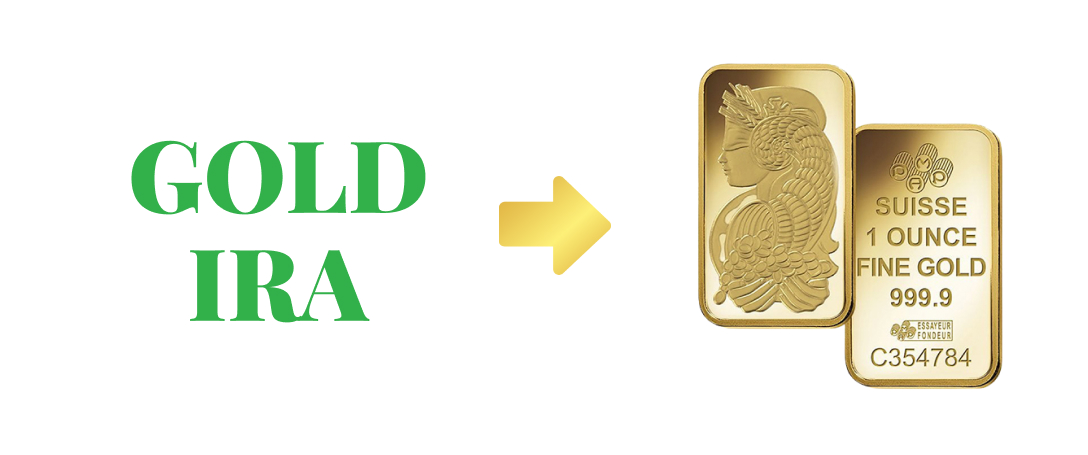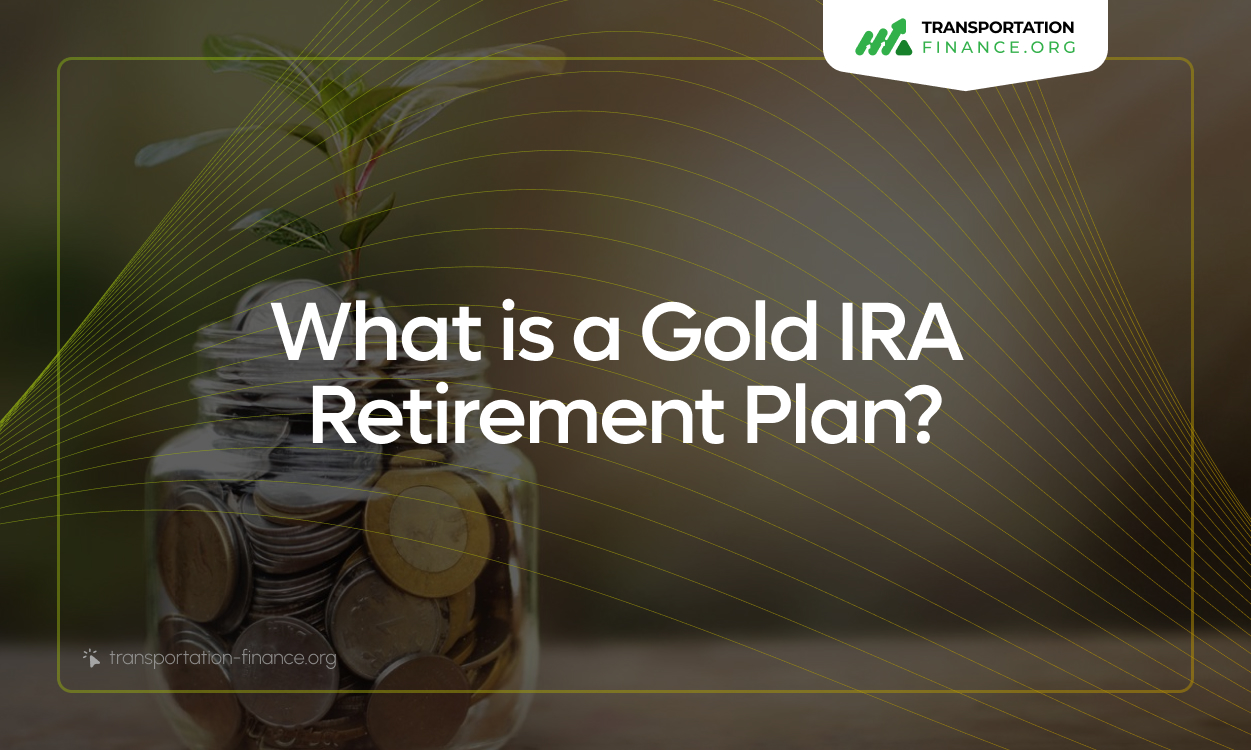Disclaimer: The companies mentioned in this report may offer compensation to us, without any charge to our readers. This is how we keep our reporting free for readers. Our selection of companies is determined by compensation and rigorous analysis.
Curious about the benefits and risks of a Gold IRA retirement plan?
Wondering how to set one up and what types of gold can be held in it? You're in the right place.
In this article, we'll explore the ins and outs of Gold IRA retirement plans, including how they work, the advantages they offer, and the potential drawbacks to consider.
Stay tuned to learn all you need to know about this investment option and how to make the most of it for your retirement savings.
Our team has spent years researching every company in the precious metals industry. Save your time and use our research ⟶
Hand picked top 5 trusted and best reviewed companies
Protect Your Retirement
Claim Your FREE Gold Kit Now
Key Takeaways
What Is a Gold IRA Retirement Plan?
A Gold IRA retirement plan is a self-directed individual retirement account (IRA) that enables individuals to invest in physical gold and other precious metals. This offers a distinct method of diversifying retirement portfolios while taking advantage of specific tax benefits provided by the Internal Revenue Service (IRS).

One significant distinction between a Gold IRA and traditional IRAs lies in the emphasis on tangible assets rather than stocks or bonds. Investors have the opportunity to include not only gold but also silver, platinum, and palladium within their Gold IRA accounts. These physical metals are securely stored in vaults to guarantee their preservation.
The potential advantages of a Gold IRA encompass protection against inflation, diversification from conventional investments, and acting as a safe haven during periods of economic uncertainty.
It is important to recognize that investing in precious metals presents risks, such as price volatility and liquidity concerns. The IRS oversees Gold IRA accounts to ensure adherence to tax regulations and guidelines.
How Does a Gold IRA Retirement Plan Work?
A Gold IRA retirement plan functions by allowing an investor to establish a self-directed IRA through a specialized custodian in gold investments. This enables the investor to acquire and retain physical gold or other IRS-approved precious metals within their investment portfolio.
The role of the custodian in a Gold IRA is pivotal, serving as the intermediary between the investor and the precious metals. Once an investor has chosen a custodian, they have the opportunity to finance their account and determine the specific types of precious metals they desire to incorporate.
Physical gold held within a Gold IRA is stored in secure and sanctioned depositories, guaranteeing its safety and compliance with IRS regulations. These depositories are typically equipped with advanced security measures to safeguard the investor's assets.
Plus physical gold, investors are permitted to hold other approved metals such as silver, platinum, and palladium within their Gold IRA. Managing gold investments in a Gold IRA involves consistently monitoring the metals' performance, reallocating funds as necessary, and staying abreast of market trends to facilitate well-knowledge-based decision making processes.
What Are the Benefits of a Gold IRA Retirement Plan?
A Gold IRA retirement plan presents numerous advantages, such as asset diversification, safeguarding against inflation, and the potential for increased returns in contrast to conventional retirement accounts, which often have substantial investments in stocks and bonds.
1. Diversification of Assets
Diversification of assets within a Gold IRA serves as a risk-mitigation strategy by spreading investments across multiple asset classes, including gold, stocks, bonds, and mutual funds, instead of relying exclusively on conventional securities.
The act of diversifying assets enables individuals to minimize the impact of market fluctuations on their retirement funds. When allocating assets, it is imperative to achieve a delicate equilibrium between risk and return.
Gold, renowned for its stability amidst economic uncertainties, can function as a hedge against inflation and market volatility.

The inclusion of gold in a retirement portfolio offers diversification, as its value often moves autonomously from other assets. This autonomy in movement can potentially soften the overall performance of the portfolio, particularly in times of financial market turbulence.
2. Protection Against Inflation
Gold has long been recognized as a hedge against inflation, serving to safeguard the purchasing power of retirement savings during periods of currency devaluation.

This historical trend is corroborated by data from the past, notably observed in the 1970s when inflation rates surged. During this period, the price of gold escalated by over 1,300% between 1970 and 1980. Investors turned to gold as a means of shielding their wealth from the erosive impacts of inflation.
Even in more contemporary contexts, such as the economic downturn of 2008, gold demonstrated its resilience. While many investments faltered during this period, the price of gold experienced a substantial increase as investors sought a secure refuge against market uncertainties and inflationary pressures.
3. Potential for Higher Returns
The potential for higher returns in a Gold IRA stems from gold's capacity to appreciate in value, particularly during periods of economic uncertainty, thereby augmenting the overall value of one's retirement assets.
Historically, gold has frequently functioned as a safe haven asset, appealing to investors looking to diversify and safeguard their portfolios. In times of market volatility or geopolitical instability, gold has displayed resilience by either maintaining its value or undergoing price surges.
For instance, during the global financial crisis in 2008, while stock markets plummeted, the price of gold experienced significant surges. This robust performance in times of crisis illustrates the distinctive attributes of gold as an investment avenue that can potentially outperform traditional assets such as stocks and bonds in specific market conditions.
Protect Your Retirement
Claim Your FREE Gold Kit Now
What Are the Risks of a Gold IRA Retirement Plan?
While a Gold IRA presents numerous advantages, it is important to acknowledge the accompanying risks, including market volatility, expenses related to storage and insurance, and the comparatively restricted liquidity when compared to conventional retirement accounts.
1. Market Volatility
The fluctuation of gold prices in the market can have a significant impact on gold investments, rendering them less predictable and potentially riskier compared to other forms of investments. During periods of uncertainty or economic instability, investors often turn to gold as a safe haven, resulting in an increase in its price due to heightened demand.
Conversely, when the economy is robust and there is reduced uncertainty, investors may pivot towards riskier assets, causing a decline in gold prices.
Several factors contribute to these price fluctuations, including geopolitical tensions, inflation levels, interest rates, and the strength of the US dollar.
An illustrative example of this phenomenon can be observed during the 2008 financial crisis when there was a notable upsurge in gold prices as investors sought refuge from the turmoil in the stock market. Similarly, the US-China trade war in 2019 also led to spikes in gold prices amidst global economic uncertainties.
2. Storage and Insurance Costs
The storage and insurance of physical gold entail supplementary expenses, which can accumulate over time and diminish the overall profitability of a Gold IRA.
Various options exist for storing physical gold within a Gold IRA. Some investors select depositories, secure facilities specifically tailored for the storage of precious metals. These depositories often provide insurance alternatives to safeguard your investment against theft or damage.
Alternatively, individuals may opt to store gold at their residence; however, this approach presents heightened security risks and may necessitate additional insurance coverage. It is crucial to evaluate the associated costs for storage and insurance, as they can affect the net returns on one's Gold IRA investment.
3. Limited Liquidity
One of the limitations of a Gold IRA is its restricted liquidity in comparison to other investment options. The process of selling physical gold within a Gold IRA can be more time-consuming and may entail additional steps through a financial institution or custodian.
When selling gold as part of a Gold IRA, the typical procedure involves submitting a sell order to the custodian, who then coordinates the sale with a bullion dealer. This process can lead to delays when compared to the immediate selling of stocks or bonds.
There might be supplementary expenses linked to selling physical gold, such as dealer fees or storage fees if the gold necessitates transportation. Conversely, assets like stocks, bonds, and other easily marketable assets can be liquidated swiftly with minimal complication and generally lower transaction costs.
How to Set Up a Gold IRA Retirement Plan?
The establishment of a Gold IRA retirement plan necessitates the selection of a qualified custodian to oversee the management of the account, the initiation of a self-directed IRA, and the infusion of funds through either a rollover, transfer, or new contributions.
Following the selection of a custodian, the subsequent step involves the completion of requisite documentation to formalize the creation of your self-directed IRA. This procedural phase typically encompasses the provision of personal information, the verification of identity, and the delineation of specific investment objectives.
Subsequently, the essential task of funding the account ensues. Funds can be transferred from an existing retirement account, like a 401(k) or traditional IRA, or fresh contributions can be made. Collaboration with a reputable financial institution is imperative to ensure adherence to IRS regulations and the safeguarding of investments.
Upon successful funding of the account, the procurement of gold for the IRA can commence, either in physical form or through gold-backed securities.
What Are the Eligibility Requirements for a Gold IRA?
To qualify for a Gold IRA, individuals must satisfy specific IRS prerequisites, which entail possessing a self-directed IRA that permits investments in physical gold and other precious metals.
Prospective participants of a Gold IRA should take note of the age stipulation, necessitating a minimum age of 18 years to establish such an account.
The annual contribution thresholds for a Gold IRA are established by the IRS and are contingent upon income levels and additional variables. It is imperative to ensure that all investments conducted within the Gold IRA align with the IRS regulations, as veering from these directives may result in substantial penalties.
Failing to comply with the IRS guidelines for Gold IRAs can entail taxation, disqualification of the account, and other financial repercussions.
What Types of Gold Can Be Held in a Gold IRA?
In a Gold IRA, investors have the opportunity to retain a variety of gold assets, encompassing physical gold in the shape of coins and bars, alongside IRS-approved gold Exchange-Traded Funds (ETFs).
1. Physical Gold
In a Gold IRA, physical gold encompasses gold coins and bars, such as gold American Eagles, which must adhere to specific purity criteria established by the IRS.
Accepted gold coins within Gold IRAs typically include United States Mint American Eagles, Canadian Maple Leafs, and South African Krugerrands, each mandated to possess a minimum purity level of 99.5%.
Gold bars permissible within Gold IRAs must meet a minimum purity standard of 0.995. It is imperative, when procuring physical gold for a Gold IRA, to engage with reputable dealers to ascertain authenticity. Subsequently, the acquired gold should be securely stored in an approved depository in compliance with IRS regulations governing IRA holdings.
2. Gold ETFs
Gold Exchange-Traded Funds (ETFs) are a form of investment that mirrors the price of gold and can be incorporated into a Gold Individual Retirement Account (IRA), offering a more liquid and simpler-to-manage alternative when compared to physical gold.
When individuals invest in gold ETFs, they are essentially purchasing shares that represent a specific quantity of gold, usually backed by physical gold held by the ETF issuer. This grants investors exposure to the price fluctuations of gold without the necessity of physically handling the metal.
One of the primary benefits of gold ETFs is their versatility, enabling investors to conveniently purchase and sell their holdings on the stock exchange. While some investors may favor physical gold due to its tangible asset value and as a means of financial security during times of economic uncertainty.
How to Choose a Custodian for a Gold IRA Retirement Plan?
The selection of an appropriate custodian for a Gold IRA retirement plan is of utmost importance, as they are responsible for managing administrative tasks, storage, and ensuring adherence to IRS regulations.
When contemplating a custodian, it is advisable to seek out a provider with a reputable track record in managing investments in precious metals. This entails assessing reviews and ratings from credible sources to determine their trustworthiness. It is essential to carefully consider the fees associated with the custodial services, as excessive fees can erode returns over an extended period.
Furthermore, evaluating the storage options provided by the custodian is crucial to guarantee the secure preservation of your gold assets. Emphasizing superior customer service is imperative, as a responsive and proactive custodian is essential in addressing your investment requirements.
What Are the Tax Implications of a Gold IRA Retirement Plan?
The tax implications of a Gold IRA retirement plan are subject to variation based on whether it is established as a traditional IRA or a Roth IRA, each presenting distinct tax benefits and considerations as delineated by the IRS.
Traditional Gold IRAs permit tax-deductible contributions, allowing the funds contributed to be excluded from the individual's taxable income for the respective year, thereby offering an immediate tax advantage. Conversely, withdrawals from a traditional Gold IRA during retirement are subject to income tax.
In contrast, Roth Gold IRAs involve contributions made using after-tax funds, eliminating the upfront tax benefit. However, the benefit of Roth Gold IRAs lies in tax-free withdrawals during retirement, provided specific conditions are met.
Protect Your Retirement
Claim Your FREE Gold Kit Now

I’m Bob Smithfield, your guide to making smart, safe investments. Here, I share financial insights and strategies that help you navigate the complex world of finance with confidence.
My goal is to provide you with the information and tools you need to make informed decisions about your finances.

